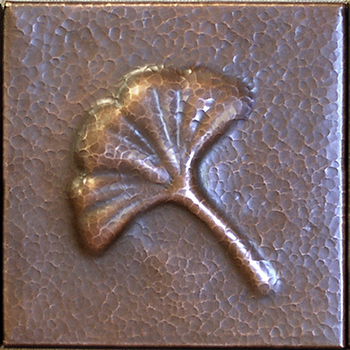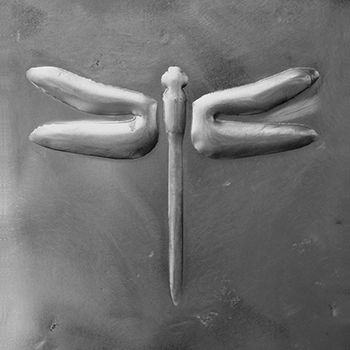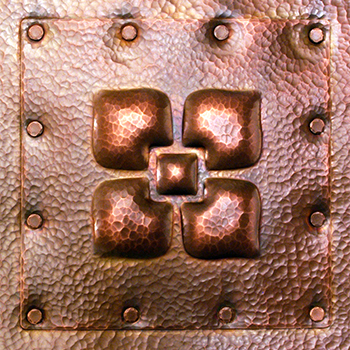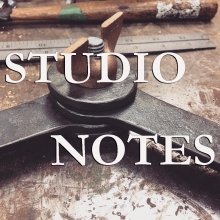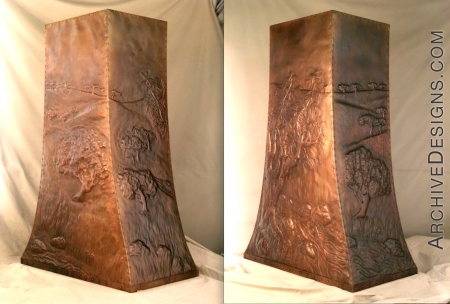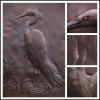
The composition of the various details: rivets, repoussé motifs, cutouts and strapping patterns all need to work together to create a symphony of richly crafted design. In particular, repoussé motifs can add a focal point or specific theme to the piece.
Richly textured imagery and sensual line work can be sculpted into the surface of the metal using the technique, known as chase and repoussé, in which the desired pattern is chiseled into the metal, working one side against the other. Complex custom handwork, such as this, can be a tedious and expensive process but the difference in the character of the work is evident. It is very effective for English or Japanese-inspired work where popular motifs include flowers, plants and insects or flowing clouds.


Alternatively, creating a mold for embossing is more economical and much faster in most cases, especially where multiples of the same pattern are desired or where the pattern is highly geometrical, such as in Frank Lloyd Wright's elaborate window designs. Embossing tends to be much more two-dimensional than repoussé, although one type of mold produces a nice pillowy quality. While copper and pewter are some of the most cooperative metals for embossing, due to malleability, mild steel and even, to a limited degree, stainless steel may also be used.
